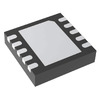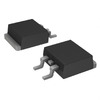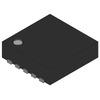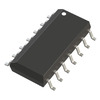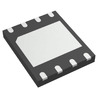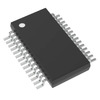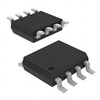Everything You Need to Know About the STM32F429IGT6
The STM32F429IGT6 microcontroller is a strong and flexible tool that can handle tasks that need high speed and good connectivity. With features like 2MB of Flash memory, a Cortex-M4 core, and many communication options, it’s useful for many areas, including industrial automation and medical devices. In this article, we will explain what the STM32F429IGT6 can do, explore similar models, and discuss how it’s used in different fields. We’ll also share tips on how to use it safely and how to debug it properly, giving developers a clear guide to get the best results from this microcontroller.Catalog
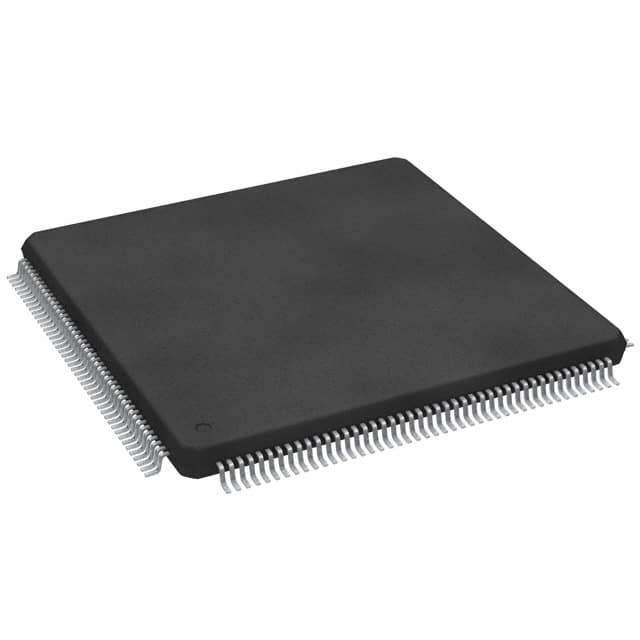
Understanding the STM32F429IGT6
The STM32F429IGT6 microcontroller comes with fast built-in memory, including up to 2MB of Flash and 256KB of SRAM, providing a solid base for handling large amounts of data. Its architecture includes several bus connections, such as two Advanced Peripheral Buses (APB), two Advanced High-performance Buses (AHB), and a 32-bit multi-AHB matrix, ensuring smooth communication between different parts and better performance overall. This setup helps speed up data access, making it a great choice for complex, demanding applications.
Alternatives and Equivalents to Consider
If you're considering other options, here are a few similar models:
Applications Across Different Industries
Communication Systems
Communication systems work much better in terms of signal processing and data transfer when using the STM32F429IGT6 microcontroller (MCU). This MCU stands out because it supports both wired and wireless technologies, ensuring strong and smooth data transfer. Its effects can be seen in various areas—from managing data in IoT networks to supporting fast internet access. Its combination of advanced processing power and built-in features makes development easier and appeals to designers aiming to build systems that can grow and adapt.
You can see how flexible this MCU is in real-world applications like:
• Improving the clarity of signals in telecommunications.
• Boosting connections in remote monitoring systems.
These uses show how this MCU can handle issues like slow data transfer and limited bandwidth, making these problems easier to manage in busy communication environments.
Industrial Automation
In industrial automation, the STM32F429IGT6’s ability to control sensors, robots, and programmable logic controllers (PLCs) with accuracy leads to better productivity and performance. This MCU’s ability to process data in real-time is especially useful in situations where precise timing is required, such as automated assembly lines or robotic systems.
Professionals in the industry have seen benefits like:
• More efficient task execution.
• Better detection of problems and faster response times.
These features help improve predictive maintenance, lowering the chances of breakdowns and reducing operating costs, making it a valuable addition to modern industrial setups.
Consumer Electronics
When it comes to consumer electronics, the STM32F429IGT6 provides top-level performance and a wide range of features that power many types of products. Whether it's the main controller or a secondary one, it handles tasks in advanced home audio systems and modern wearables effectively. This MCU is designed to manage power well and offer great processing power, leading to better user experiences and longer battery life.
Devices that use this MCU often show:
• Improved functionality.
• Higher reliability.
These traits are crucial for delivering high-quality, user-friendly devices, securing the MCU's place in the future of connected consumer products. Its role in smart home devices also shows how it helps create more intuitive and connected living spaces.
Medical Devices
The STM32F429IGT6 MCU plays a key role in medical devices because of its ability to process signals and control equipment accurately. High accuracy and reliability are must-haves for medical tools like diagnostic and monitoring equipment, and this MCU meets these requirements easily. Its ability to handle complex calculations and process data in real-time ensures that medical devices operate with the precision required.
Some of its uses in the medical field include:
• Portable diagnostic tools.
• Advanced imaging systems.
These examples show how the MCU helps improve healthcare through technology by making medical tools work more efficiently.
Smart Home Applications
The STM32F429IGT6’s flexible communication features make it perfect for smart home systems, allowing easy control over different household devices and greatly improving the smart home experience. The MCU’s support for multiple communication protocols ensures that it can work with a wide range of smart home products, from lighting to security systems.
Real-world uses of this MCU in smart homes include:
• Better communication between devices.
• Improved integration and response times.
Its ability to update and customize functions easily adds to its appeal, making it a popular choice in the rapidly changing smart home market.
Naming Rules of STM32F429IGT6

Key Usage Tips Using STM32F429IGT6
The STM32F429IGT6 is a reliable and flexible microcontroller. To help it work well and last a long time, certain safety measures should be followed. Paying close attention to how the circuits are connected, controlling voltage, following programming rules, and managing heat are all ways to avoid common issues and make the most of this microcontroller.
Ensure Proper Circuit Connections
To get the best performance from the STM32F429IGT6, strong and stable circuit connections are very important. Poor connections can lead to short circuits or signal loss, which could cause the system to malfunction or stop working unexpectedly.
Regularly checking your connections with tools like oscilloscopes can help you catch problems early. Using high-quality connectors and secure soldering methods can prevent future damage, ensuring your system runs smoothly for a long time.
Avoid Over-voltage or Over-current
The STM32F429IGT6 is sensitive to changes in electricity. Keeping the voltage and current within safe limits is important.
Using voltage regulators, current-limiting resistors, and surge protectors can shield the microcontroller from sudden electrical spikes or surges, much like how larger industrial systems protect important equipment from power overloads.
Follow ST's Programming Guidelines
Carefully following ST’s programming instructions when using the STM32F429IGT6 helps maintain system stability and efficiency. Tools like JTAG or SWD can help catch programming mistakes early, while regularly updating the firmware keeps the system running smoothly.
Good programming habits are similar to maintaining software in IT systems—regular updates and following best practices help keep everything running well over time.
Manage Heat and Ventilation
Because the STM32F429IGT6 offers high performance, it can generate heat. To prevent overheating, proper heat management is needed.
Using heat sinks, thermal pads, and ensuring good airflow will help keep the temperature safe. This is similar to how cooling systems in computers help keep processors within a safe temperature range, so they can work efficiently under different conditions.
Characteristics of STM32F429IGT6
Comprehensive Communication Options
The STM32F429IGT6 has many communication features, including Ethernet MAC, a camera interface, and various communication methods such as CAN, I2C, SPI, USART, UART, and SDIO. These different communication options make the microcontroller very flexible, allowing it to connect with a wide range of external devices and systems. Making good use of these communication interfaces can simplify the design of complex embedded systems, helping meet various project needs efficiently.
Advanced Audio Features
The STM32F429IGT6 also includes advanced audio features, such as a dedicated audio PLL, I2S, and SAI. These features help ensure high-quality sound and efficient handling of audio data, which is especially useful for projects that require excellent sound quality. Using these strong audio features allows developers to meet the demands of high-end audio systems.
Low Power Design and Display Control
The STM32F429IGT6 is designed for projects that need low power usage, with support for SDRAM interfaces, Chrom-ART, and LCD-TFT control. These features make it great for portable, battery-operated devices, where saving energy is very important. The inclusion of Chrom-ART and LCD-TFT control helps create rich graphical user interfaces, which are important for improving the user experience in modern gadgets.
Memory and Processing Power
The STM32F429IGT6 comes with up to 256KB of SRAM and 2MB of dual-bank flash memory, operating at a speed of 180MHz. This large memory and fast operation make it possible to run complex algorithms and handle large amounts of data. The flexible memory controller, which supports different types of memory, allows for adaptability in various projects, ensuring that the microcontroller performs well no matter what type of memory is used.
Improved Security and Specialized Processing
The STM32F429IGT6 includes an FPU (Floating Point Unit), DSP instructions, and an MPU (Memory Protection Unit), all of which boost its security and processing abilities. The FPU speeds up complex math operations, which is especially useful in digital signal processing and control systems. The MPU helps protect sensitive data by providing memory protection, aligning with the growing need for security in embedded systems.
Extensive Peripheral Integration
The Cortex-M4 core inside the STM32F429IGT6 includes many built-in peripherals, such as a true random number generator (RNG), real-time clock (RTC), digital-to-analog converter (DAC), analog-to-digital converter (ADC), and a wide range of timers. This rich set of features makes system design easier, reducing the need for extra external components. For example, the true RNG is essential in encryption tasks, providing reliable security. In practice, using these built-in features directly in the microcontroller cuts down on development time and increases system reliability.
Unique Capabilities and Considerations
The STM32F429IGT6 offers a great deal of flexibility and durability in design, thanks to its wide range of features. Its combination of low-power usage and strong performance makes it a good fit for modern embedded systems. By balancing energy-saving features with advanced processing and communication options, it meets the needs of today’s industries, improving the development process and the overall efficiency of embedded projects.
Power Supply Diagram
For a visual representation, refer to the accompanying image illustrating the power supply diagram.

Detailed Specifications of STM32F429IGT6
The STM32F429IGT6 is a powerful microcontroller from the ARM family, widely used in various applications, from everyday electronic gadgets to complex industrial machines. It’s designed to manage multiple tasks simultaneously, offering strong performance, which makes it a popular choice in modern electronic systems.
Product Classification
This microcontroller belongs to the ARM MCU (Microcontroller Unit) category. It uses Surface-Mount Device (SMD) and Surface-Mount Technology (SMT) methods, which allow it to be mounted directly onto printed circuit boards (PCBs). These methods save space and make the microcontroller easy to integrate into compact designs.
Packaging and Assembly
The STM32F429IGT6 comes in a Low Quad Flat Package (LQFP-176), ensuring safe handling during transport. This packaging is not only reliable but also makes the device easier to solder, helping manufacturers streamline their assembly processes.
Core and Architecture
At the heart of the STM32F429IGT6 is the ARM Cortex-M4 core, which balances strong processing power with energy efficiency. This makes it suitable for tasks requiring fast responses. It also includes features like Digital Signal Processing (DSP) instructions and a Floating Point Unit (FPU), which are important for handling tasks that require quick and accurate calculations.
Peripheral Interfaces and Connectivity
With 140 Input/Output (I/O) pins, this microcontroller can connect to a wide variety of external devices and sensors. The large number of I/O pins allows designers to build systems with greater flexibility, ensuring easy communication between different components in electronic systems.
Memory and Storage
The STM32F429IGT6 comes with 260KB of Data RAM and 1MB of Program Memory. This ample memory capacity allows it to run large software programs and handle multiple tasks at the same time. This is especially useful for systems that require smooth operation and reliable performance, such as industrial or complex control systems.
Analog-Digital Conversion
This microcontroller is equipped with a 12-bit Analog-to-Digital Converter (ADC), providing precise measurements of analog signals. It can support up to 24 ADC channels, meaning it can monitor many analog signals simultaneously, making it ideal for applications that need accurate signal processing.
Timing Components
There are 14 timers and counters built into the STM32F429IGT6. These components help manage timing functions crucial for many embedded systems, ensuring that everything stays in sync and operates with accurate timing. This is particularly vital in real-time applications.
Practical Implications and Industry Usage
In practical use, the STM32F429IGT6’s numerous I/O pins and ADC channels make it an excellent choice for systems like industrial automation, where it can manage multiple sensors and devices at once. Its large memory and fast processing also make it ideal for real-time data analysis, which is essential for medical devices that require precision and reliability.
With all these features, the STM32F429IGT6 not only meets the current needs of embedded systems but also sets a standard for future technologies. Selecting the right microcontroller often involves balancing processing power, connectivity, and energy efficiency. The STM32F429IGT6 covers all these bases, making it a strong choice for advanced technological applications.
Debugging Techniques
Ensuring Proper Setup and Connection
First, make sure the debugging tool is properly connected to the hardware. Also, confirm that all required software tools and settings are installed correctly. A stable connection forms a good starting point for the debugging process.
Choosing the Right Debug Mode
Pick a debug mode that provides full access to the internal registers and memory. This choice helps in doing a complete check-up and can uncover hidden problems in the microcontroller.
Loading and Analyzing the Compiled Program
Load the compiled program onto the microcontroller, making sure the correct version of the code is being used. Be attentive to details during this step to avoid confusion during the analysis that follows.
Setting Breakpoints in Key Places
Set breakpoints in key parts of the code. This lets you pause the execution at important points, giving you a chance to check the program's behavior at those moments.
Performing Step-by-Step Execution
Run the program step-by-step. Watch closely to understand how the program works and to spot any potential issues in the logic of the code.
Watching Register and Memory Values
Keep a constant watch on register and memory values. This ongoing observation can help spot unusual behavior, giving you a better idea of what’s going wrong inside the system.
Diagnosing Problems Using Careful Checks
If problems show up, use debugging tools to carefully check the values of variables, memory, and registers. Go through the call stack step-by-step to trace where the error is coming from. This methodical approach can help you find the source of the issue.
Fixing and Repeating the Process
After identifying the problem, fix it and repeat the process as needed. This cycle of finding, fixing, and testing continues until all the issues are resolved, ensuring the system works correctly without errors.
Frequently Asked Questions
1. What is the maximum clock speed of the STM32F429IGT6?
The STM32F429IGT6 runs at a maximum clock speed of 180 MHz. This allows for fast processing and high performance, making it a great choice for applications that need quick response times and strong system performance.
2. What are the alternatives to the STM32F429IGT6?
If you are looking for alternatives to the STM32F429IGT6, consider the STM32F429ZIT6, STM32F439IGT6, or STM32F446RET6. These alternatives offer similar performance and features, making them easy to integrate into existing designs. However, when choosing an alternative, think about the specific needs of your application, as each model may have different advantages like lower power use, a different set of features, or better cost-effectiveness.
3. What does the Flexible Memory Controller (FMC) do?
The Flexible Memory Controller (FMC) helps connect the microcontroller to different types of external memory, such as SDRAM, NOR Flash, and NAND Flash. This makes memory management more flexible and powerful. In practice, the FMC is very useful for applications that need to store and access large amounts of data quickly, like multimedia processing and big data logging.
4. What is the ARM Cortex-M used for?
The ARM Cortex-M series is designed for efficient signal processing and is used in a wide range of applications across different industries. Known for its low power use and strong performance, it’s perfect for motor control, automotive systems, power management, embedded audio solutions, and industrial automation. This makes it a popular choice for building advanced control systems and smart devices where both performance and reliability are needed. Designers also choose the ARM Cortex-M because of the strong support it gets from the developer community, which helps speed up development and innovation.
About us
ALLELCO LIMITED
Read more
Quick inquiry
Please send an inquiry, we will respond immediately.
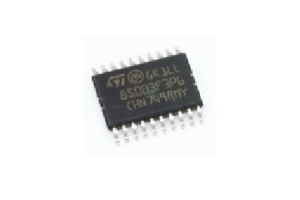
Comprehensive Guide to the STM8S003F3P6TR Microcontroller
on September 25th
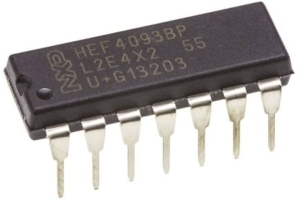
HEF4093BP: What It Is and How It Works in Circuits?
on September 24th
Popular Posts
-

What is GND in the circuit?
on January 1th 2946
-

RJ-45 Connector Guide: RJ-45 Connector Color Codes, Wiring Schemes, R-J45 Applications, RJ-45 Datasheets
on January 1th 2502
-

Fiber Connector Types: SC Vs LC And LC Vs MTP
on January 1th 2091
-

Understanding Power Supply Voltages in Electronics VCC, VDD, VEE, VSS, and GND
on November 9th 1898
-

Comparison Between DB9 and RS232
on January 1th 1765
-

What Is An LR44 Battery?
Electricity, that ubiquitous force, quietly permeates every aspect of our daily lives, from trivial gadgets to life-threatening medical equipment, it plays a silent role. However, truly grasping this energy, especially how to store and efficiently output it, is no easy task. It is against this background that this article will focus on a type of coin cell battery that may seem insignificant on the...on January 1th 1714
-

Understanding the Fundamentals:Inductance Resistance, andCapacitance
In the intricate dance of electrical engineering, a trio of fundamental elements takes center stage: inductance, resistance, and capacitance. Each bears unique traits that dictate the dynamic rhythms of electronic circuits. Here, we embark on a journey to decipher the complexities of these components, to uncover their distinct roles and practical uses within the vast electrical orchestra. Inductan...on January 1th 1662
-

CR2430 Battery Comprehensive Guide: Specifications, Applications and Comparison to CR2032 Batteries
What is CR2430 battery ?Benefits of CR2430 BatteriesNormCR2430 Battery ApplicationsCR2430 EquivalentCR2430 VS CR2032Battery CR2430 SizeWhat to look for when buying the CR2430 and equivalentsData Sheet PDFFrequently Asked Questions Batteries are the heart of small electronic devices. Among the many types available, coin cells play a crucial role, commonly found in calculators, remote controls, and ...on January 1th 1567
-

What Is RF and Why Do We Use It?
Radio Frequency (RF) technology is a key part of modern wireless communication, enabling data transmission over long distances without physical connections. This article delves into the basics of RF, explaining how electromagnetic radiation (EMR) makes RF communication possible. We will explore the principles of EMR, the creation and control of RF signals, and their wide-ranging uses. The article ...on January 1th 1550
-

CR2450 vs CR2032: Can The Battery Be Used Instead?
Lithium manganese batteries do have some similarities with other lithium batteries. High energy density and long service life are the characteristics they have in common. This kind of battery has won the trust and favor of many consumers because of its unique safety. Expensive tech gadgets? Small appliances in our homes? Look around and you'll see them everywhere. Among these many lithium-manganes...on January 1th 1519









